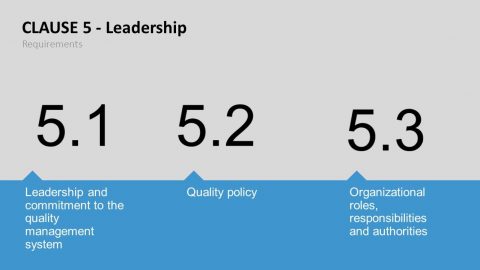
Illustration (Source: Internet)
Clause 5.1 of ISO 9001:2015 requires top management to demonstrate both leadership and commitment to the quality management system. Top management must drive continual improvement. However, a lot of quality professionals feel top management are not fulfilling their requirements – 67%, in fact (according to the Global Quality Survey 2017).
“All quality initiatives are destined to fail without support from leadership.” John Frankin Acre, JFA Geestao & Technologies said. “As soon as leadership got engaged with quality, we found quality took another shape and became a strategic priority for every employee.”- Amr Abour-bakr, Orana Egypt.
So how should top management demonstrate their commitment? Below, we share three examples and give you the opportunity to share your own experiences in this short survey.
Example 1: Talking to customers
Part of Qualsys’s transition to ISO 9001:2015 has been to formalise existing activities. For example, Qualsys’s Managing Director, Mike Pound, has been visiting his company’s customers for the past 22 years. But he’s now made that a formal duty by setting aside time in his diary to visit three customers every month.
Mike says: “Now that Qualsys has grown to just under 50 employees, it’s more important than ever to make sure we connect with our customers so we can align their needs with our own strategic priorities. I find visiting customers very insightful and I think every managing director should take the time to understand the risks and opportunities their customers face.”
“Senior management and management want to concentrate on sales and profit. We demonstrate how the quality management system can enhance profit. I hold regular meetings with the management teams and feed back the improvements the management system is making to their business.”- Roy Jones, RJ Project Management
A large textile manufacturer transformed its brand’s reputation by demonstrating quality performance. This brand had a poor reputation for on-time delivery, but the operational team and the quality team worked really hard for two or three years to nail it. They worked it to death. Eventually, they got absolutely brilliant at it. “After this, they asked all of their customers, ‘What do you think of our on-time delivery now?’. And the customers still said it was poor. And that was because the customers were still thinking about the brand back when the firm’s quality performance wasn’t as mature.”
“Quality managers need to work on communicating good quality performance – that is partly their job. If you don’t help people to translate good quality performance into business language, it’s not going to happen.”
Quality managers can help leadership engage and demonstrate commitment by translating quality performance into business marketing language.
Gemma Baldan, Key Account Manager at Qualsys, says: “For many organisations, leadership demonstrate their commitment by providing the tools to embed, communicate and manage quality.
“For example, the University of Leeds is very quality-driven. Messages comes from the top of their organisation using their electronic quality management system EQMS, and that makes for a very successful and positive company culture.”
Many top management teams use EQMS to demonstrate their commitment to quality by:
With the investment in the EQMS tool, the effectiveness of the organization increases significantly.
Source: Quality Eqms